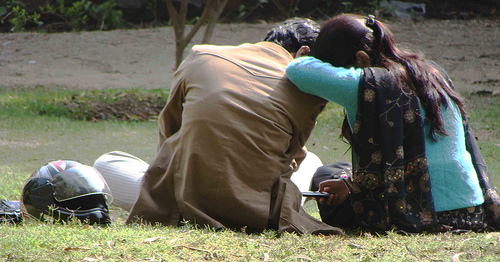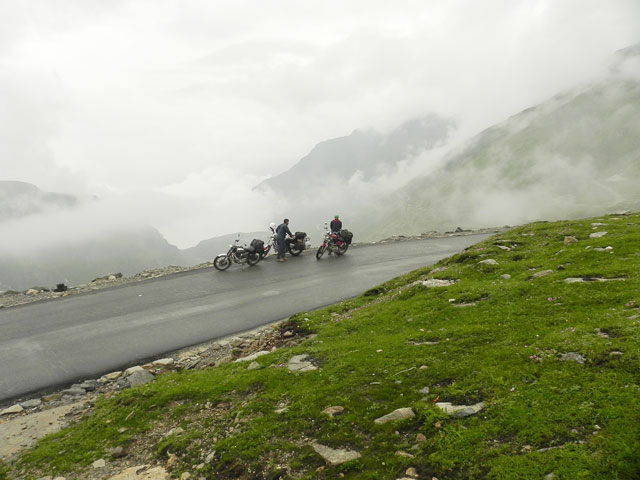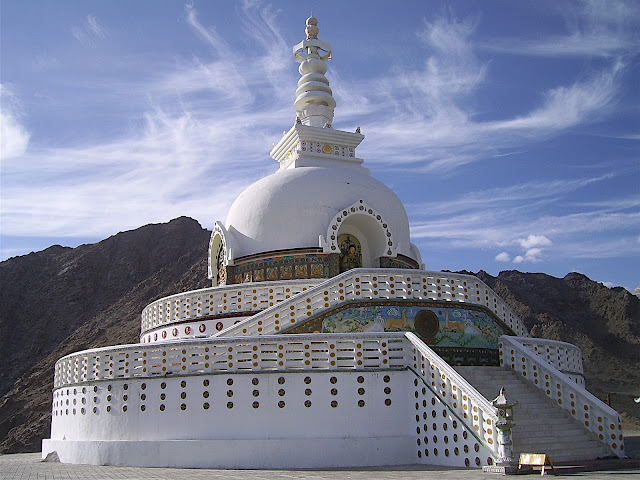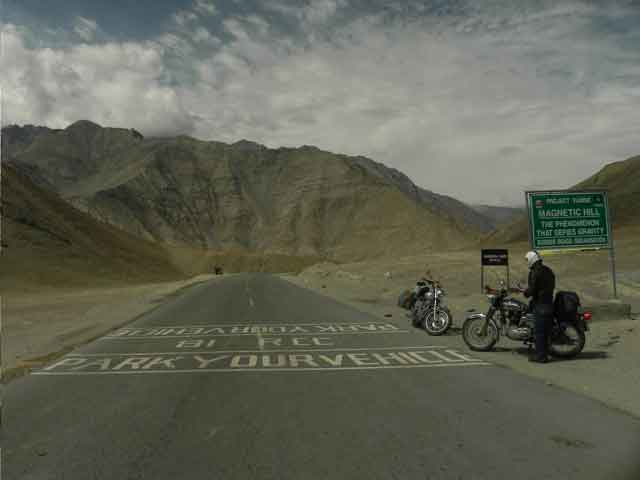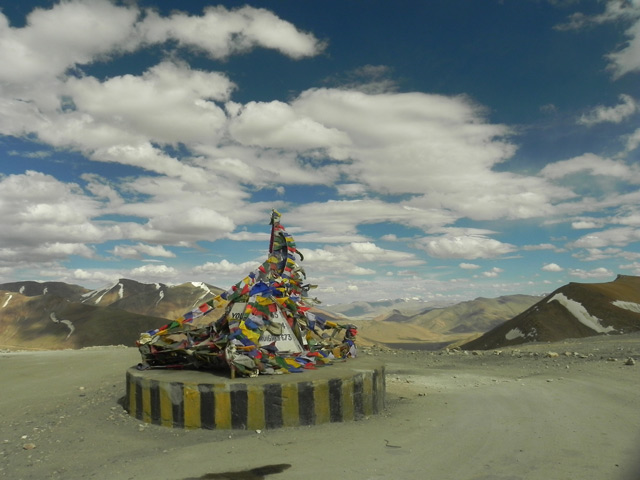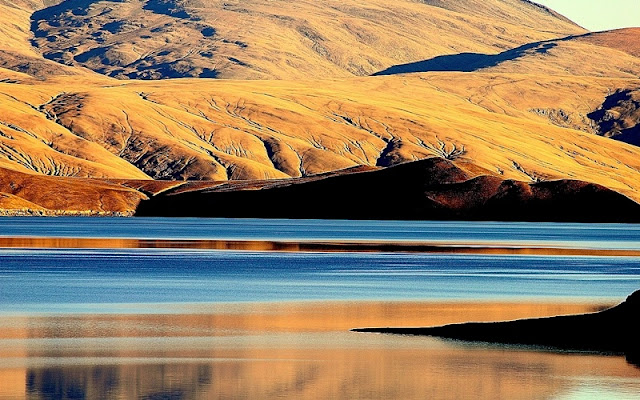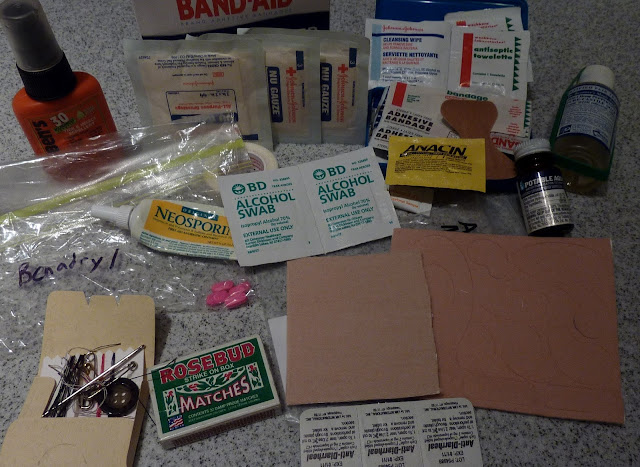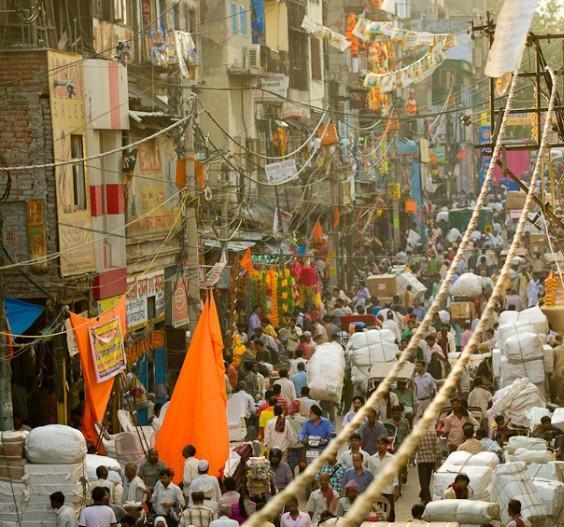What a feeling it is to get finally Leh'd. And I must say that it was a dream come true as I did the long cherished bike trip to Ladakh.
The Backdrop
Being a corporate slave for 9 years leads to you to an unforeseen moment of redemption when you decide to chuck all you have, take a month's sabbatical, pack your bags and just travel. Travel anywhere.
You don’t care if the trip is gonna throw your finances further than you can manage, or that you’ll have to deal with the rolling ball of fire that is your girlfriend.
So, after much research, Ladakh was where I decided to go. I was looking forward to explore the barren beauty and high passes of Ladakh on a bike. Yeah, a bike trip it had to be.
![Rohtang La Pass, Ladakh Buke Trip Rohtang Pass]() |
| Misty Mountains after reaching Rohtang La Pass |
I came upon this website that “offers a 14 nights and 15 days Himalayan Motorbike Adventure tour package to bring you face to face with the scenic beauty of Manali and Ladakh”.
In reality, the itinerary indeed looked promising. The 15 day itinerary lets you savor enchanting views of the Tibetan Buddhist monasteries , high altitude lakes and lush green hills. The night stay was scheduled alternately in both hotels and camps.
DESTINATIONS to be COVERED: DELHI – MANALI – JISPA – SARCHU – TSOMORIRI - LEH – KHARDUNGLA PASS – KEYLONG - MANALI - DELHI
DURATION: 12 NIGHTS / 13 DAYS
The Ride!
Okay, this was a no-brainer and solicited zero research. My ride had to be the Royal Enfield Bullet 500, a behemoth of a machine I have lusted on ever since I rode my first two-wheeler with an electric motor. Logic wise, here are the reasons I chose an Enfield:
· It’s a Royal Enfield.
· I needed a heavy engine to work on high altitudes and cruise on the highways. A motorbike with a smaller engine fares well on the congested city roads of India; on the highways, you need a sturdy ride that can easily maintain speeds between 70-80 on open stretches.
· You need instant power delivery and lots of torque to charter steep mountain inclines.
· It’s a Royal Enfield.
I borrowed my cousin’s ride and we established an instant connection – metaphorically like those from the Na’vi tribe did in Avatar.
Before you read this, please note that this is a personal account of a first time traveler to Ladakh. Please be forgiving when gauging its information quotient. If there is something you need information about, please feel free to poke me through this query form.
Trip Preparations
Okay, since this was supposed to be a two week trip, it called for a lot of planning. I lapped up one travel forum after another and zeroed in on the essentials. Since I was riding without a pillion, I could afford some extra luggage to straddle with my bike. Here’s what all I packed.
· Leather Jackets and Woolen Pullovers
· A pair of raincoats
· Two pairs of hand gloves – leather for riding and woolen otherwise.
· Mufflers and skull caps to keep warm.
· An elaborate first aid kit with life saving medicines like Avomine,Dexamethasone, Diamox and Acetazolamide.
· Comfortable woolen thermocot inners ( 5 pairs!)
· Woolen and cotton socks (5 pairs again!)
· Waterproof shoes since the ride involved crossing rivulets
· A Tesco Sleeping bag for unplanned camping stays
· Lots of instant energy chocolates, biscuits and dry fruits
· Batteries and more batteries for Camera and cell phone plus a universal charger
Important Tip: Try and use as much dispensables as you can. For example, use dispensable shaving razors, toothbrushes, paper soaps etc. that you can easily throw away after use.
Prologue
Readers must understand that our contracted travel company provisioned all necessary travel items and that a backup tour car accompanied us throughout our journey. The company also gave us the option for choosing a motorbike , but since I could arrange my own bike, I saved big on the overall tour costs.
The Actual Trip
DAY 1: DELHI (ARRIVAL)
As I arrived in New Delhi and reached The Lalit, Connaught Place, I could see there were quite a few of us (18 to be precise). The website’s tour representative came and welcomed us with a garland and a mineral water bottle. Thereafter, he escorted us to our rooms. The rest of the day was spent by ourselves and largely uneventful.
Day in a Song – Tomorrow by The Brothers Johnson
DAY 2: DELHI - MANALI (550 Km / about 12 hrs drive)
In the morning, we started on our road journey to Manali. This is where the bike ride was supposed to begin with (I already had my bike sent by train).
For the uninitiated, located at an elevation of 2050 meters on the banks of the Beas River, Manali is a popular hill station in the north Indian state of Himachal Pradesh.
The drive itself was tiring, yet fulfilling and featured smooth highway runs, sharp mountain bends and uncertain terrains. Upon arrival in Manali, we checked in at the hotel for overnight stay.
Day in a Song – Long Long Journey by Enya
DAY 3: MANALI
While those who had rented bikes were shown their rides, 5 of our group went to retrieve our ladies from the courier office in Manali which, thankfully, wasn’t far from where we were staying.
We spent the day strolling local markets and I even got one of those cheesy wooden keychains with S and S painted on either side (masterstroke, I know!). As the rest of the touring party returned, they were taught the nuances of handling a Bullet while us 5 could do little to suppress our smirks.
The shenanigans finally stopped and everyone huddled outside next to a dramatic bonfire featuring spirited, impromptu dance performances by some.
Yours truly simply swigged his scotch and bid an early goodbye.
Day in a Song – Let’s Get This Started Now! By Black Eyed Peas
DAY 4: MANALI - JISPA (145 kms / about 6 hrs ride}
Breakfast the next morning was had in excess. One thing that I learnt the hard way was that you should always consume a lot of fats and carbs at higher altitudes.
So I absolutely sunk into a plateful of Mutton Korma and Phirni. Post breakfast in the morning, we started on our bikes for Jispa through the Rohtang La pass (3980m).
The journey was a revelation, and I could feel the chills as we negotiated hairpin bends and uneven terrains the mountains threw at us. As we arrived in Jispa, we checked in at Hotel Ibex and relaxed for a while. Later, we set out to explore the native Jispa on a walk.
Day in a Song – Warrior of the World by Manowar
DAY 5: JISPA - SARCHU (75 Kms /about 4-5 hrs ride}
After the morning ritual of heavy breakfast (I was somewhat disappointed by the quality of food here, but gorged anyway), we began our ride over the picturesque Bara Lacha pass (4830 meters).
Thereafter, we crossed the pass drop down to the expansive Sarchu plains. This is where our camps were set up. I love camps, BTW. They make me believe I’m closer to nature. Plus, Bonfires! We stayed in Sarchu for the night.
Day in a Song – It’s a Wonderful Feeling by Julie Berthelsen.
DAY 6: SARCHU – TSO MORIRI LAKE (140 Km / about 6 hrs ride)
Now is when it got tricky. Day 6 morning, I felt having difficulty in breathing. I was panting while talking and was struggling to gather enough oxygen. My nose was paining and irritable and I thought I was better off traveling in the backup car. I couldn't eat much and had to contend with a small portion of Maggi noodles.
My companions told me this was the ever so common high altitude sickness and would take me some time dealing with. And really, I was okay after a while – endless cups of coffee only helped further. So we headed towards the Tso Moriri Lake, at an altitude of 4595 meters above sea level.
We reach Tso Moriri and it’s camps again! I was again not feeling well; by now, 7 more riders of the group were feeling nauseous and even made an adequate show of it. We all retired early to our bunks.
Day in a Song – Born to be Wild by Steppenwolf
![Gata Loops, Leh Manali Highway Gata Loops, Ladakh Bike Trip]() |
| A Breathtaking view of the landscape from Gata Loops, Leh Manali Highway |
DAY 7: TSOMORIRI – LEH (215 km / about 7 hrs ride)Early morning, our tour instructor gave us a small lecture on Acute Mountain Sickness and how to deal with it. Nice chap, made a lot of mountain jokes.
Later, we all took a leisurely stroll on the banks of Tso Moriri Lake & explored the Korzok monastery. Sometime around noon, we began our journey to Leh. On the way, we passed through a picturesque village right alongside the Indus River. 7 hours and several aching limbs later, we finally reached Leh.
Roadtrips often tend to take a toll on your body. So much so that, at times, by the time you reach your destination, you don’t feel like doing much. A comfy bed with nice comforters is your only recreation. Meanwhile…
Day in a Song - Highway Star by Deep Purple
DAY 8: EXPLORE INDUS VALLEY
Day 8 began with a full day excursion to the Indus Valley. We visited the Shey Palace, the 14th century Thikse monastery ( a fine specimen of Ladakhi architecture) This was followed by the much anticipated visit to the Hemis monastery. Anticipated because it is the only tourist landmark I had managed to research before coming here.
Day in a Song - Light my Fire by The Doors
DAY 9: LEH - KHARDUNGLA PASS
Early morning, we began our ride towards the Khardung La Pass (world’s highest motorable pass at an altitude of 5606 meters). We stopped for the customary photo-op and some coffee. Khardung La pass was a humbling experience. The breathtaking views only added to our excitement.
I felt like I had seen it all, like the trip could end right now and I won’t care. This was a time for retrospection about the journey I had made, about life, about things. I felt like I could see the world from there. It was a shame we couldn't stay there longer – and our clattering teeth and shivering bodies further backed the case to return.
We started back to Leh and reached only a few hours later. Post lunch, we explored the 9 storied Leh Palace built by King Singe Namgyal and Shanti Stupa. Our overnight stay was scheduled in a local hotel. I slept with a smile on my face.
Day in a Song - Free Bird by Lynyrd Skynyrd
DAY 10: LEH – SARCHU (250 Km / about 6-7 hrs ride)
For obvious reasons, the trip back to Sarchu didn’t seem that exciting. The trough of our journey had started and we were returning to the same old way of life we were used to.
In fact, if you ever happen to see my expression in the photographs we shot on our way to return, you’ll know I wasn't pleased.
Day in a Song - Ramblin' Man by Allman Brothers Band
DAY 11: SARCHU – KEYLONG (110 Kms / 4-5 hrs ride)
Okay, it had begun to get a little mundane by now. We started your journey towards Keylong and marvelled at the spectacular views of the conifers hillsides and meadows as the road climbed upwards.
Upon arrival in Keylong, we checked in at the hotel to relax. I was starting to hate Ladakh, for I no longer wanted to go back, for it had made me fall in love with it. We reached Manali.
Day in a Song - Always with me Always with you by Joe Satriani
DAY 12: KEYLONG – MANALI (115 Kms / 4 hrs ride)
It seemed like time was flying, like we were going faster than required. Like a kid who pleads with his parents to stay longer in a theme park, I was urging my co-travelers to stay at each halt a little longer, click more pictures.
Manali was reached in about 4 hours. While others were too clumsy to get out of their beds, two of us got out to examine the local scene. We came back a couple of hours later, still fresh, still ready to go back to Leh. But we had to sleep, for tomorrow was the journey back home. Stupid, stupid Delhi!
Day in a Song – Turn the Page by Metallica
DAY 13: DELHI (What the Heck!)
Yeah, yeah, we were going back. No we weren’t riding. The company arranged for our bikes to be transported back to Delhi. I tried to look forward to returning home, where a beautiful, though annoyed, ku:r (girlfriend) was waiting to make a Goshtaba out of me!
Day in a Song (sad version) – I’m Coming Home by J. Cole
This was the tariff I was offered by the said company:
Special Price Offer Nett & Non-Commissionable
Category | For Minimum 2-3 Riders | For Minimum 4-6 Riders | For Minimum 7-10 Riders | Single Room Supplement
|
|
|
|
|
Standard | INR 1,85,000 Per Rider | INR 1,40,000 Per Pillion | INR 1,51,000 Per Person | INR 115,000 Per Pillion | INR 1,16,000 Per Person | INR 90,000 Per Pillion | INR 25,000 Nett
|
|
Deluxe | INR 2,10,000 Per Person | INR 1,62,000 Per Pillion | INR 1,75,000 Per Person | INR 1,30,000 Per Pillion | INR 1,40,000 Per Person | INR 105,000 Per Pillion | INR35,000 Nett |
|
These were the package inclusions:
· 12 night’s accommodation on full board basis
· Daily Breakfast, Morning & Evening Tea & Dinner.
· Latest Model of Royal Enfield Motorcycle on all riding days.
· Fuel for Motorcycle in whole tour
· Back up vehicle for your luggage & motorcycle spare parts.
· Experienced mechanic on all riding day.
· All Required Restricted Area Permits.
· Delhi-Manali by Air-conditioned Exclusive Private Vehicle.
· Manali-Delhi by Air-conditioned Exclusive Private Vehicle.
· All arrival / departure transfers sightseeing & overland journey by private Air Conditioned Vehicle as per program.
· Entrance fees to the all monuments, monasteries and temples as per program.
· Assistance on arrival and departure transfers.
· English speaking Motorcycle Tour Leader for whole trip.
· Farewell Dinner.
All taxes
I Leave you with a few more photographs from Ladakh.
![Shanti Stupa, Ladakh Shanti Stupa]() |
| Shnti Stupa is the best place to observe panoramic view of Leh Town |
![Magnetic Hill, Ladakh Magnetic Hill]() |
| Magnetic Hill, Ladakh |
![Taglang La Pass, Leh Manali Highway Taglang La]() |
| Taglang La Pass, Leh Manali Highway |
![Tso Moriri Lake, Ladakh Tso Moriri Lake, Ladakh]() |
| Tso Moriri Lake, Ladakh |
This is what I paid for extra:
Travel Insurance, Camera and video camera fees, Personal expenses like tips, bar & restaurant charge, Telephone bills, any other personal expenses not included in the above inclusions.
P.S. – I’m going back next year! J


